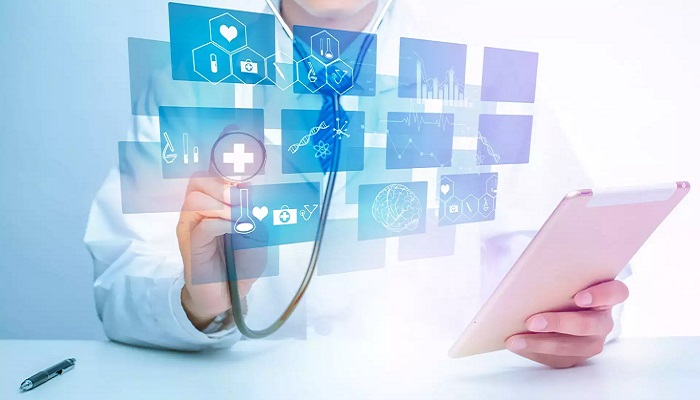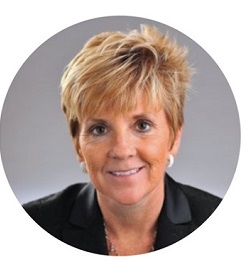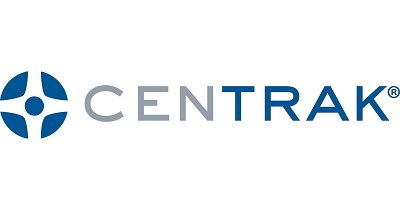Hospitals, urgent care facilities, clinics, and imaging centers throughout the United States are experiencing staffing issues, which take a toll on existing employees, patient experience and outcomes, and a facility’s financial health. Over the last few years of rising employee turnover, fluctuations in patient expectations, and a growing focus on workplace well-being, healthcare organizations have addressed this challenge by staffing their facilities with temporary health professionals. This solution is costly, reduces staff morale, and doesn’t guarantee an increase in personalized patient care – and staffing challenges are only anticipated to grow.
One-third of the registered nurses participating in a survey conducted this year stated that it was likely they would leave bedside nursing prematurely, with another recent study highlighting that almost 1 million nurses plan to leave the profession by 2027. Almost half of the participants cited both burnout and high-stress environments as their main reasons to retire or pursue other careers. As staff shortages increase, so do workloads. Almost half of the nurses who responded to McKinsey & Company’s recent survey echoed that sentiment with the intent to leave their role in the near future based on two top reasons: lack of feeling valued and an unmanageable workload. As much as 5% of nursing shifts are spent on non-value-added tasks that fall outside their designated role. This increases the overall stress shouldered by caregivers and reduces the time with patients.
Administrative burdens and manual tasks are additional drivers of staff burnout. Many of those interviewed by McKinsey & Company expressed that the processes and workflows involved in their day-to-day work are manual. Providing the necessary system support is key to achieving high-quality patient care, staff satisfaction, and overall retention, along with increasing an organization’s bottom line. Emerging technologies such as real-time location systems (RTLS) have been proven to offer cost-effective solutions that ease operational burdens and enhance patient and staff safety.
Automate Workflow to Determine the Best Staffing Options
It isn’t a secret that improving operational performance at hospitals helps to improve staff productivity, morale, care quality, and patient outcomes. To provide a solution for nurses and the overall healthcare team, the best place to start is with the manual administrative processes bogging down already overwhelmed healthcare professionals. The McKinsey & Company study reports the potential to free up to 15% of clinicians’ time through technology or automation and improved task delegation.
Lessening the manual tasks of healthcare staff is a critical aspect of combating burnout and promoting retention, and healthcare leaders will find that investing in healthcare professionals makes sense for the facility’s bottom line. To jointly provide the best patient care and workplace environment, staff need access to platforms that automate workflow to alleviate manual documentation, which can often be delayed or inaccurate, and offer proactive communications to each other, patients, and family members. Workflow platforms that leverage RTLS data can keep tabs on key patient flow metrics and ensure staff know where all patients are in their care journey.
Effective enterprise-wide care coordination can be greatly hindered by manual workflow systems. Healthcare decision-makers can eliminate the manual aspect of these non-value-added tasks by providing access to an advanced workflow platform with staff display boards showing real-time facility visibility of patients and staff. Through this automated system, teams are on the same page with up-to-the-minute insight to continuously measure interactions, reduce bottlenecks, and consider the best staffing choices at the right time. Real-time communications and enterprise visibility keep daily operations running smoothly with clear insights, which leads to high productivity and satisfaction.
Healthcare Teams and Patients Benefit from Enterprise Visibility
Equipping healthcare professionals with comprehensive visibility empowers teams to securely monitor each component throughout a healthcare facility or unit – the patient journey, equipment status, staff updates, and interactions between these elements – ensuring that staff knows which tasks to prioritize. For example, in the emergency department at a leading academic health system in North Carolina, staff quickly gather information needed to register patients, then go into their RTLS workflow platform to select a call button, and patients are immediately notified of the next steps in their care journey. Facilities that have adopted this tool observe improvements in wait time, communication, recognition, and responsiveness – all contributing to a better patient experience and operational performance.
RTLS’ IoT-enabled badges and tags automate the data collection enterprise-wide to gain precise, real-time insights and documentation on equipment utilization, clinical workflows, patient/staff interactions, and overall safety. With the use of an RTLS badge assigned upon patient check-in, advanced workflow platforms can deliver a major impact by offering proactive status updates as patients and staff move throughout the facility, display estimated wait times, keep family members informed of care progression through automated text messaging alerts, and provide staff location views on display boards that give an easy-to-read layout for streamlined communications. True efficiency of healthcare processes means no manual input. Real-time location sensors keep clinical information automated and continuously updated as the care journey progresses.
The reliable and actionable data provided by comprehensive visibility in healthcare is now more vital than ever. Like any organization, healthcare facilities must analyze data to make informed decisions concerning facility performance, patient experience, equipment supply, staffing plans, long-term goals, and scalability. By leveraging the system’s built-in patient flow reports, healthcare teams and leadership are able to monitor key patient flow metrics such as patient volume, length of stay, room utilization, and patient wait times. This information offers a holistic view of interactions and movement across the healthcare campus and flags anomalies or bottlenecks. Decision-makers can then begin the improvement process and make a direct impact where it’s truly needed.
Further Enhance Workflow Operations with RTLS Add-Ons
To ensure greater workflow efficiency, higher safety standards, the ultimate patient and staff experiences, and substantial ROI, strategic location technology partners offer expert-led consulting and training services. These programs provide tailored, multi-tiered assessments and transformational practices to review pain points and consider the right technology to deploy to fully benefit patients, staff, and the health organization. Healthcare teams can maximize their location technologies to drive meaningful change throughout their enterprise using practical guidance.
The best way to achieve a substantial increase in value and efficiency across an entire healthcare campus is with a personalized approach that combines the existing workflow design with a strategic roadmap that considers the next 3-5 years from an experienced RTLS partner. Seek RTLS providers that work with nurses, former hospital administrators, epidemiologists, and clinic managers as part of their implementation and consulting teams. These individuals have experience in the field and bring firsthand knowledge to hospital pain points. Through their actionable guidance, healthcare facilities can maximize real-time technologies, increase visibility and communication, and leverage automation for meaningful efficiency changes throughout the enterprise workflow. By also choosing an RTLS partner with a comprehensive suite of solutions, it’s easier to scale from workflow solutions to other use cases, such as staff duress, in the future and ensure minimal rework or downtime as the system receives additional add-ons.
Automated Workflows Offer Support and Significant Results
RTLS has significantly developed as AI and ML have grown in healthcare over the last decade. As RTLS and location technology become an even larger focus within healthcare facilities, the industry will see further increases in predictive data analytics, automated administrative tasks, and a push to increase cost savings. By leveraging these emerging technologies to reduce manual documentation and increase automated workflow efficiencies, clinicians can reallocate precious time back to where it matters most – focusing on their own mental health and well-being and an increased dedication to patient care.




















